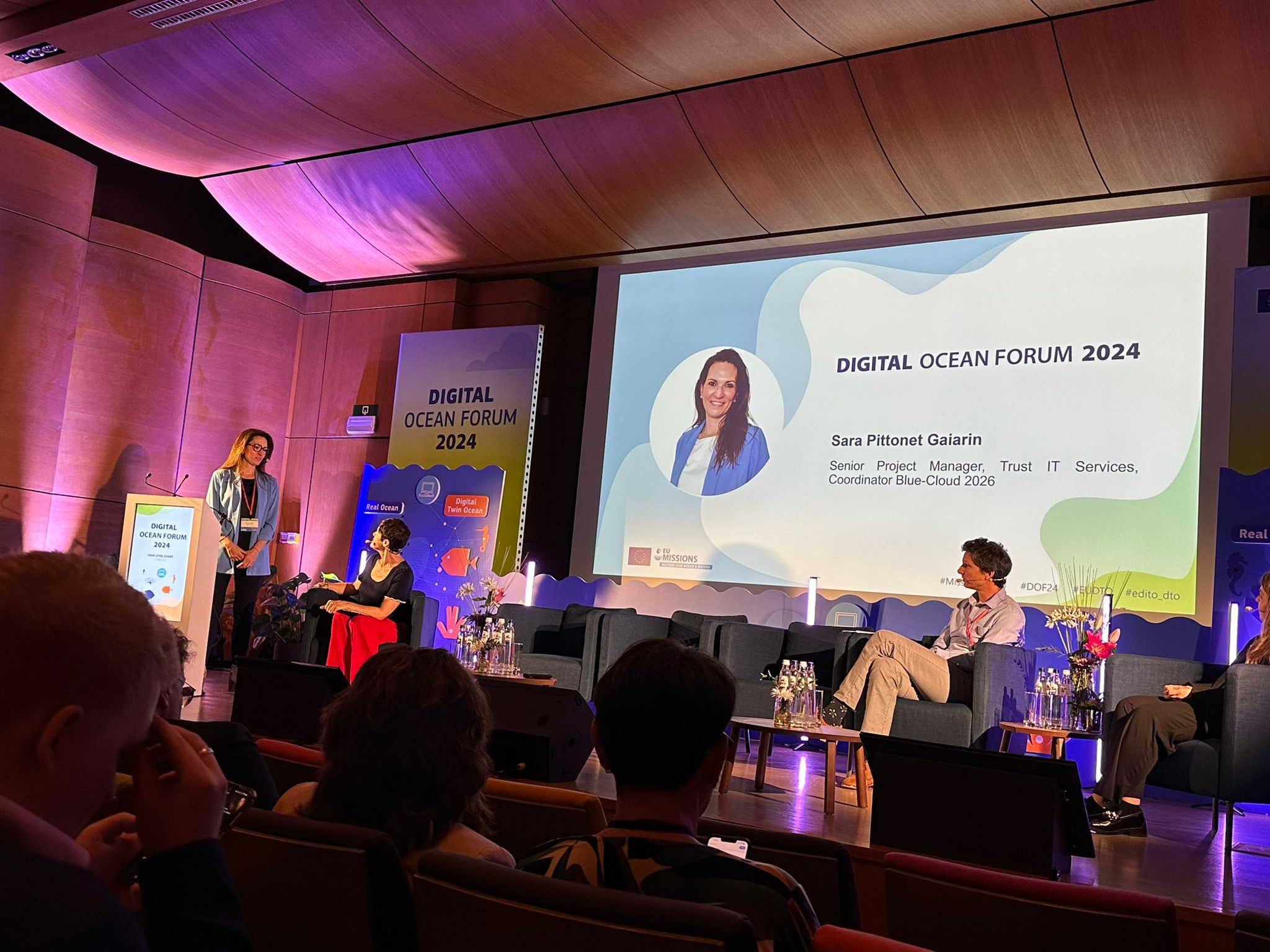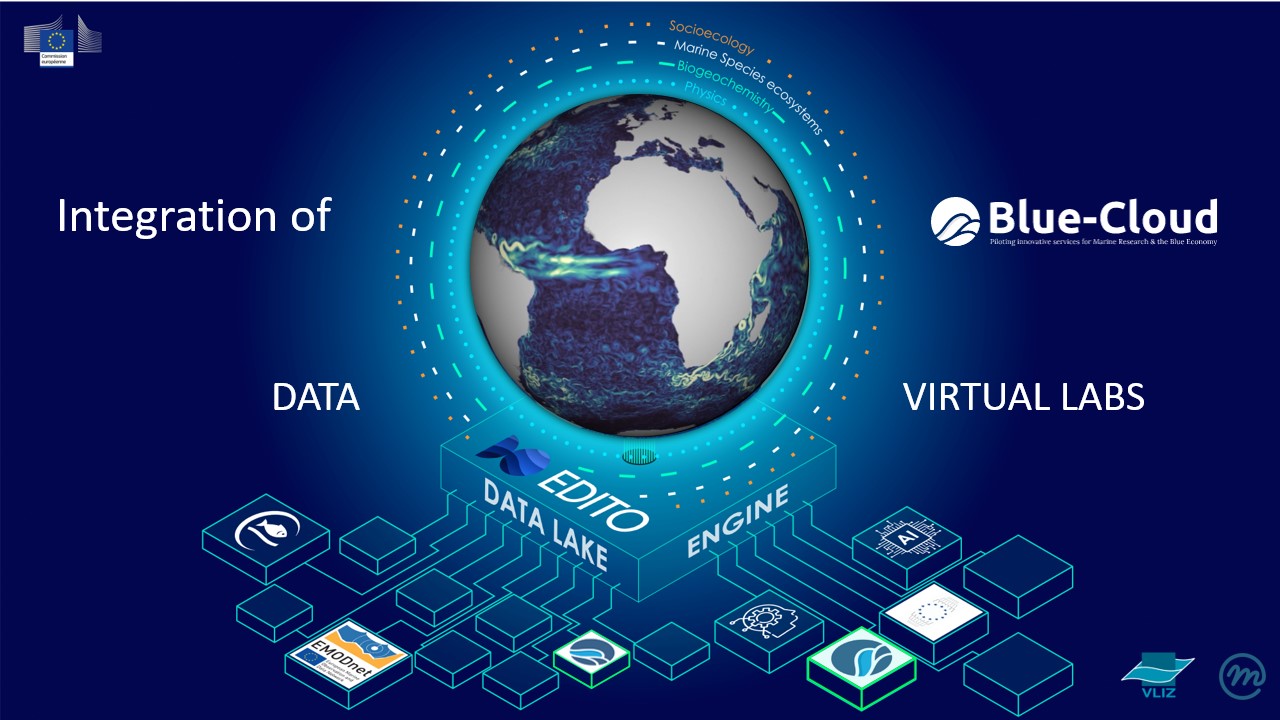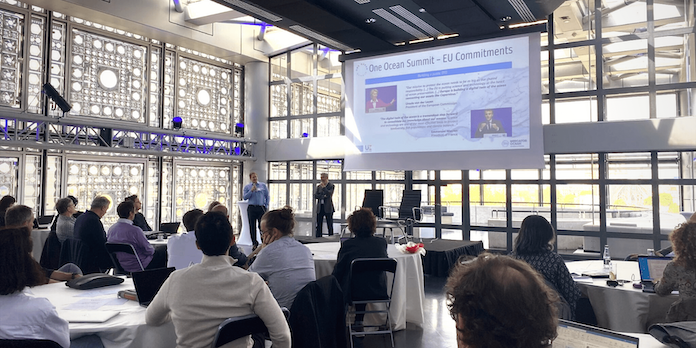The European Green Deal recognises that Europe’s seas, oceans, and environment are a source of natural and economic wealth for Europe that we must preserve and protect to ensure that they continue sustaining us in the future. The Mission Restore our Ocean and Waters, under Horizon Europe, aims at protecting and restoring ecosystems and biodiversity, for zero pollution, and for decarbonisation and net greenhouse gas emissions reduction towards climate-neutrality. These objectives are fully aligned with the UN Decade of Ocean Science for Sustainable Development.In this context, the development of an EU Digital Twin of the Ocean is a key priority for Europe, under the umbrella of the Digital Twin of the Ocean (DTO) and Destination Earth initiatives, and globally, under the Digital Twins of the Oceans (DITTO) initiative. Twins will be built on existing assets, to improve ocean knowledge and support science-based actionable decision-making based on the next generation of digital ocean models and marine information systems and enabling implementation of what-if scenarios.
The Blue-Cloud outputs provide data and data service assets that are essential for European twins and inclusion of European marine environments into global twins. Work completed under Blue-Cloud on harmonisation of data discovery and retrieval services across its infrastructures bring key data sets to direct availability for the data lake of the European DTO and to feed European data sets into the global DITTO initiative. Ongoing work on improving data services, for example in the molecular biology area domain, will serve to add appropriate metadata structures, compliant for example with IODE "radar" requirements, for discovery into global ocean twins. Provision by Blue-Cloud of input data into digital ocean twins will give continuity to the work of data gathering and harmonisation Blue-Cloud, while offering immediate value to stakeholders in the digital twin initiatives. Furthermore, the different demonstration projects and VREs created in Blue-Cloud, will be offered to the DTO and DITTO to be hosted locally to illustrate focused usage of each of the twins and to sustain important expert work ongoing by Blue-Cloud's demonstrator communities.
Blue-Cloud as a founding pillar of the DTO
Within this infrastructure, Blue-Cloud is seen as one of the founding research components, offering e-infrastructure services (computing, storage, analytical, SSO, AAI and generic services to be orchestrated with a large variety of data resources), federated data (10M+ datasets and products from leading European marine data management infrastructures (COPERNICUS C3S, COPERNICUS CMEMS, ELIXIR-ENA, EMODnet, Euro-Argo, Argo GDAC, EuroBioImaging, EurOBIS, ICOS-Marine and SeaDataNet), and research intensive virtual labs. Blue-Cloud also offers an entry level to EOSC, where services and products can be exploited and used in the DTO and where an active community of research stakeholder is piloting Open Access services for cross-disciplinary purposes.
The DTO project is piloted by Mercator Ocean International, a global leader in digital oceanography selected by the European Commission to implement the Copernicus Marine Service for the flagship EU Copernicus Earth Observation programme. MOI is now becoming an Intergovernmental Organisation, with the endorsement of the French Government and other countries (decision taken during the One Ocean Summit on 11 February 2022). MOI is also a Steering board partner in the Blue-Cloud project.

Blue-Cloud at Digital Ocean Forum (DOF) 2024
Blue-Cloud2026 was selected to contribute to the European Digital Twin of the Ocean, and participated on the 12th of June to the Digital Ocean Forum Scientific & Technical Workshop, and on the 13th of June to the main event as an example of platform releasing applications of interest for integration potential with EDITO. Sara Pittonet Gaiarin, senior project manager at Trust-IT Services & Blue-Cloud 2026 project coordinator, gave a live demo during the High-Level Event , of how Blue-Cloud Zoo and Phytoplankton EOV demonstrator was used by a team of researchers during the Blue-Cloud Hackathon 2022 to develop an application for the real time assessment of marine megafauna in Marine Protected Areas in the North Atlantic.
The demo was titled "Unravelling marine food webs towards marine biodiversity conservation, an EDITOBlue Cloud cooperation" and a video was realised , available below.
Integration of Blue-Cloud assets into the EU DTO
The integration of Blue-Cloud assets into the DTO could be dual. First at data access level, the different datasets available in Blue-Cloud could become part of the Datalake of the EU DTO. This would give continuity to the work of data gathering and organizing made in Blue cloud, while offering users of this data access a solution. Second, the different demonstration projects and the VREs, created in Blue-Cloud, could be hosted on the service infrastructure of the DTO. This would open some sustainability to the Blue-Cloud project results and enable the community of users and collaborators to get into and maintain these services in a durable way as offered by the EDITO infra platform.
Read the insights from the Ocean Decade Forum 2022


In addition to the ILIAD DTO project, the first European DTO project, the EU commission, wanting to scale up the DTO initiative and make it compatible with the Destination Earth program, has started the project for a EU Public Infrastructure for the European Digital Twin, called EDITO-infra.
EDITO-Infra will be upgrading, combining and integrating key service components of the existing EU ocean observing, monitoring and data programmes Copernicus Marine Service (Copernicus Marine Service) and the European Marine Observation and Data Network (EMODnet) into a single digital framework. As such, EDITO-Infra will provide the foundation for the further development of the EU DTO initiative, hosting the deployment of multiple DTO applications from ongoing and future digital twin projects, supporting the deployment of new generation of ocean models (e.g. via Horizon Europe underlying models for the European DTO projects) and of the Mission lighthouses projects.